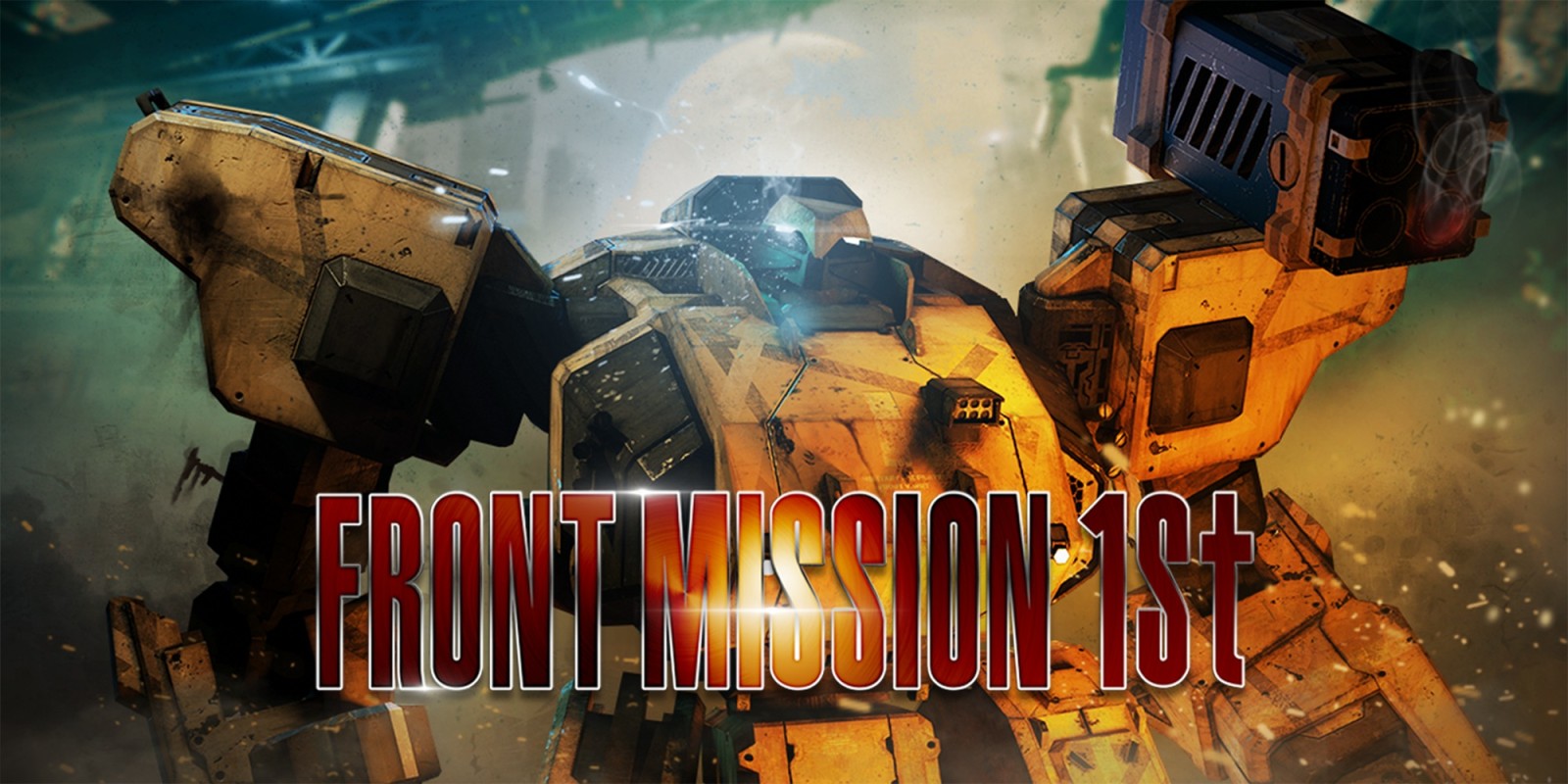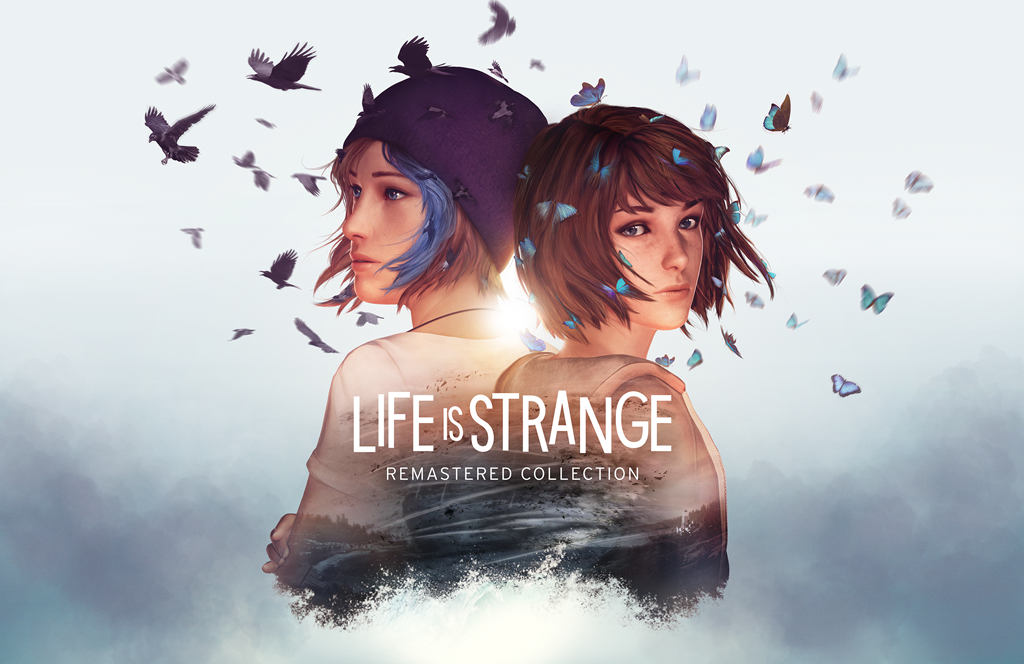Front Mission 1st Remake Review (PS5) – Frontal Assault
I’ve been a big fan of the Front Mission games ever since the third entry released in 1999 during the heady days of Squaresoft’s reign over the PlayStation RPG scene. It wasn’t until 2007 that I was able to play the original Front Mission on Nintendo DS thanks to the PlayStation port of the SNES original, finally making its way to Western shores via DS. It was with trepidation and some excitement that we here at Finger Guns heard the news that Front Mission 1st, 2nd, and now 3 were being remade by Forever Entertainment.
Fast forward and Front Mission 1st Remake has released on Nintendo Switch last year, and now comes to PlayStation 4 and 5, PC and Xbox consoles. Where the original looks like an isometric tactical pixelart Metal Gear (considering it came out just five years after Metal Gear 2, and heavily features bipedal mechs, you can see the inspiration) this remake keeps the isometric grid-based design view and updates to a modern 3D look. But beyond graphics, what’s changed?
Well, mostly it’s quality of life improvements to modernise the game. The story, concurrent campaigns, and customisation are largely unchanged thankfully. Additions include new difficulty levels, a modern ‘free’ camera instead of restriction to the isometric angle, tactical overhead maps, and a reorchestrated soundtrack. Less welcome are the updates to the script, which has been largely watered down. If that doesn’t sound like much, it’s true. 1st’s Remake plays it very safe and feels like a missed opportunity.
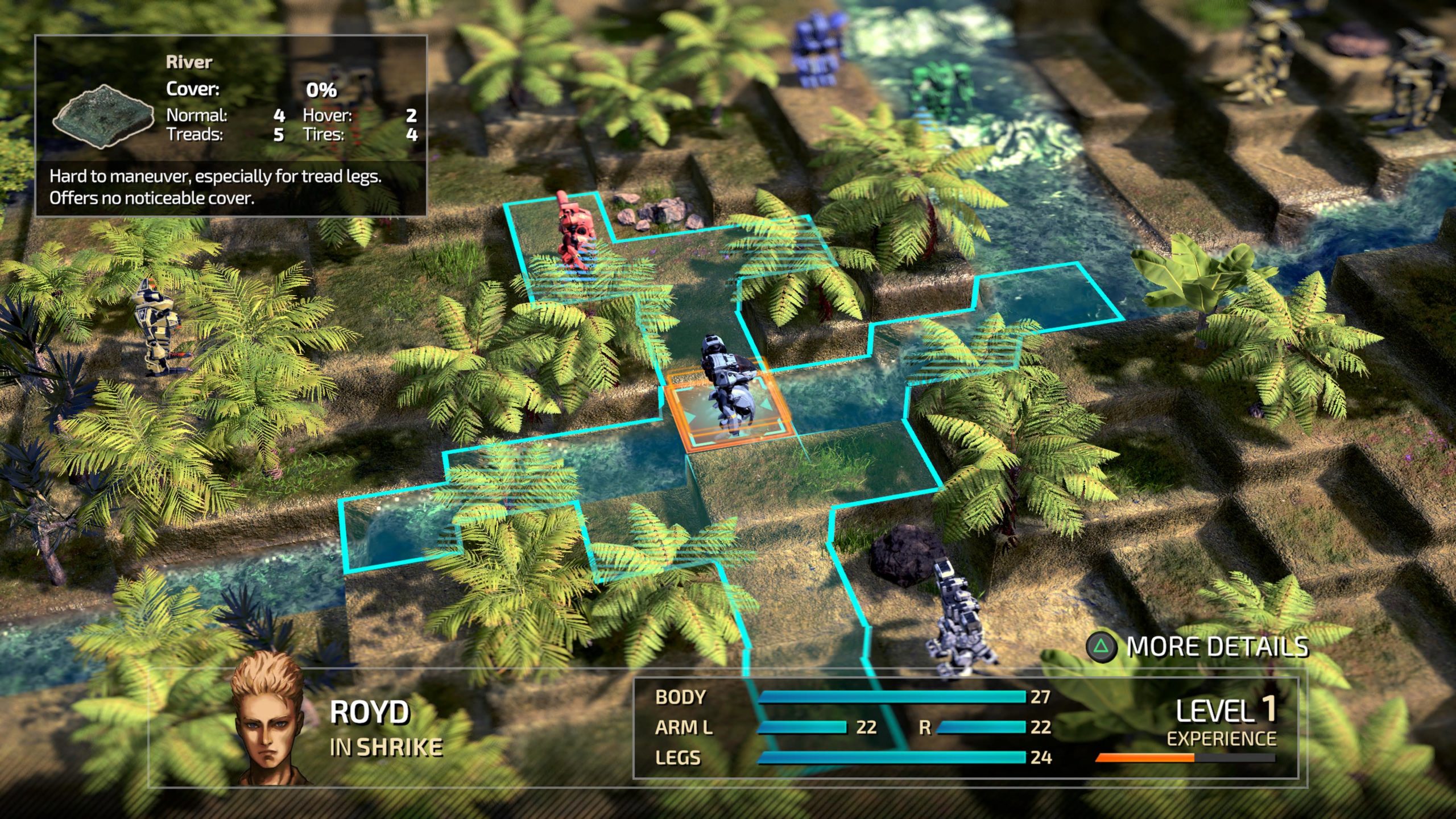
Party in the USN
Front Mission is the type of political-government-agency-mission-centred-plot that you can either get fully invested in and understand every nuance of, or you can let wash right over you and just concentrate on the basic events. There are two campaigns, and if you are the type to want the full intricate plot, you will need to play both, taking part in the conflict on Huffman Isle from both sides. Most players will focus on the first ‘normal’ campaign, playing as Royd Clive (although some of us knew him as Lloyd in previous translations) a Captain in the OCU or Oceania Cooperative Union, a fictional future army consisting of multiple modern Asian countries. You are pitted against the USN, which is a version of a fully United North and South American continent.
Royd’s story starts with tragedy – as a young captain, his fiancé and fellow wanzer pilot Karen is killed in action during a controversial incident, sparking a conflict between these two superpowers on the small Huffman Island in the Pacific. Royd is stripped of command and discharged from the army, the blame for the incident falling on him and his squad. A year later, making ends meet as a wanzer (mech) arena fighter, he’s recruited to a wanzer taskforce and given the opportunity to hunt down the man who piloted the wanzer that killed his fiancé. That makes it sound quite melodramatic, and the background kind of is, but the actual mission-to-mission plot is slow, and full of minutiae. We need this base, scout here, help people evacuate etc, it gets a little more interesting when Royd goes off-book sometimes, as he’s become something of a maverick as a mercenary.
My main issue, with the original as well as the remake is that it’s told in a very stilted and dull fashion. Text to read at the bottom of the screen, mostly still character art, and still menu screens or the actual grid maps. I don’t think you ever see the real pilots themselves at a real location – its menus or wanzer battlefields. And that’s fine, not everyone is here for plot, but it’s also hard to find yourself really invested in these characters. The Remake never really takes any opportunities to enhance or make the story more interesting. Even the big reveals just kind of come and go, and leave little impression.
The other ‘hard’ campaign, which was always advised to be tackled second, follows Kevin Greenfield, a USN wanzer pilot as he first hunts down a terrorist operation, and then when that goes south, hires on with the USN special weapons division and finds himself of Huffman Island just as the conflict breaks out. This sets you up on the opposite side of the story that you played through as Royd. There are a number of secrets and mysteries to be solved taking on the second campaign, but I have always and still do feel it was largely a way to artificially extend the game by reusing many of the same battlefields and scenarios. That’s no different here in the remake. Front Mission 3 made far better use, narrative-speaking of the two campaigns angle, and it’s not Front Mission 1st’s strongest asset.
The killer in this remake version of the story is that the punchy mercenary dialogue, the gritty side of these grizzled soldiers, is watered down and smoothed off to such an extent that they lose a lot of their flavour. The original and ports kept a very young me interested by having a pretty adult storyline, but here it’s been knocked back to a 12A style. And while events haven’t been changed, how characters react is important, so changing that and diluting it, really changes the tone. And not for the better.
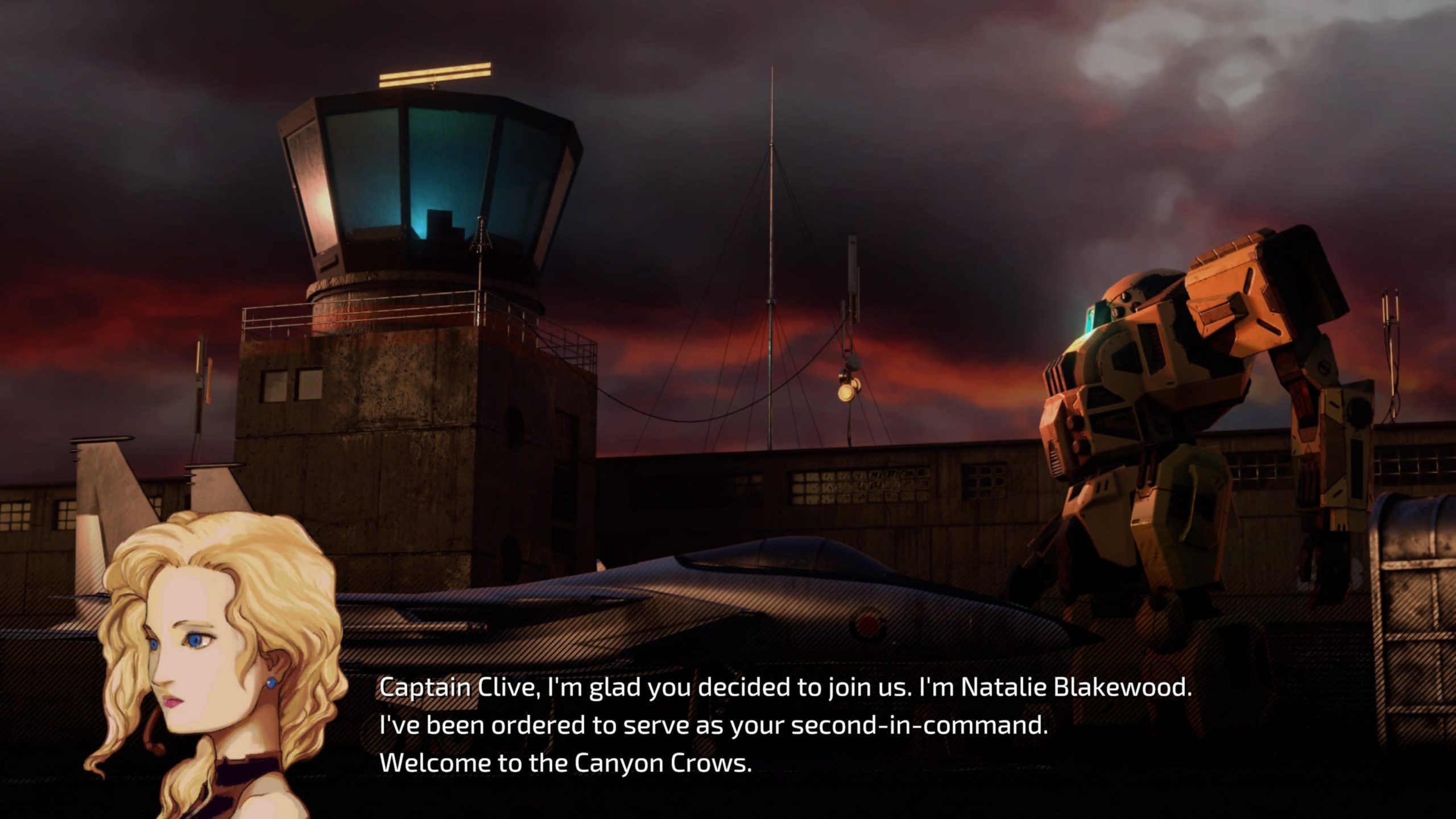
Leading From The Front
The Front Mission style (at least in the early games) is one of turn-based isometric mech combat. The remake adds more fluidity to the camera and view, but the grid layout is still there. Your wanzers have four weapon slots, two hands, and two shoulder mounts, allowing for multiple redundancies and choices for the moment in battle. You can move your wanzer and use a weapon each turn, hits and damage are based on accuracy, luck, distance and cover stats, and a hell of a lot of RNG. You also counter enemies and they can counter you on almost any turn/attack based on your proficiency or speed.
The best part though is that they are mechs – and therefore have different parts. You can hit legs, arms, and torso sections, disabling certain weapons and attacks in the process. Battles can be won more by disabling mech weapon systems than by fully trashing the entire mech. Take out the legs for instance, and that mech is reduced to single square movement.
On the battle front, it’s really a one-for-one remake, with little embellishment. For instance, the way the battles work is very retro these days. No area attacks, no attacks that hit multiple targets at once, no notice taken of front, back or side attacks. What’s missing and what I thought was going to be included in this remake was more modern style – such as those mentioned. It’s almost too straight a remake – more a remaster, with emphasis on graphics and almost nothing else. Now that’s not to say it’s not a solid game – it is and it always was, but it’s not really been remade much at all. It’s lost its heart and soul, and gained, what, some difficulty levels and a diluted script?
If you can get on with this retro-style strategy gameplay, there is plenty of fun to be had, but don’t expect it to feel modernised. Even the parts that have supposedly been modernised, feel woefully underdone. For example, the touted ‘free’ camera is smooth, but it’s weirdly restricted to 180 degrees. For what reason? To feel like the original? What’s the issue with going behind enemy wanzers? Why modernise the camera and not give us 360 degrees?
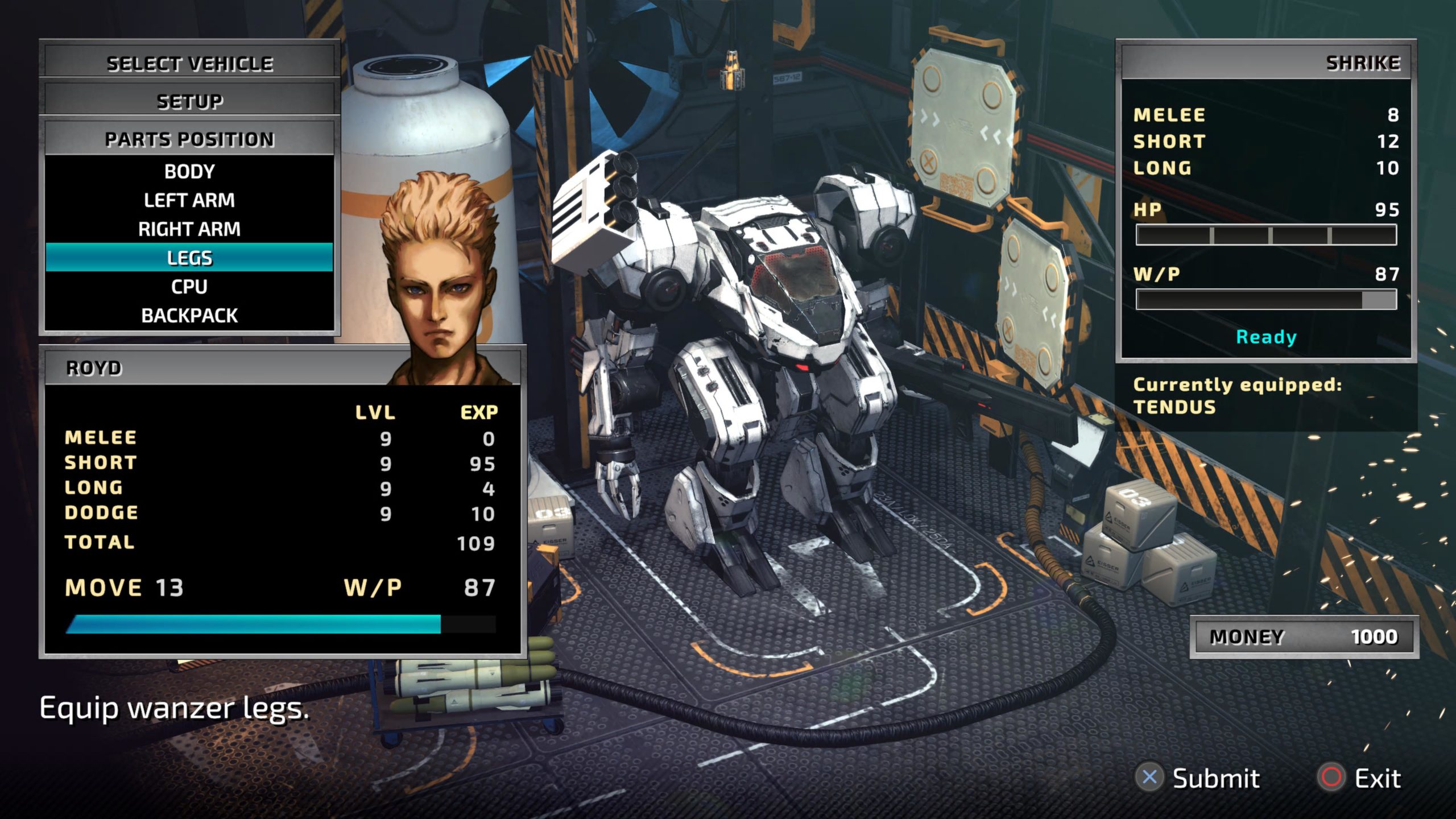
Frontal Lobotomy
A pet peeve of mine with retro tactics games, was the lack of much in the way of grindable battles. Often it’s the story scenarios or nothing. Front Mission 1st is guilty of this to a large degree – there’s no practice battles or grinding area. But what it has is the Arena – one-on-one you can pit each of your wanzers against opponents until they level up, and get some money as you go. It’s time-consuming, grindy, and it’s a shame again to see no new features here to make the game more accessible. Why not expand the arena into pitched team battles, on a really small scale, levelling multiple team members at once?
The graphics, the metallic meat of this remake, are perhaps serviceable at best. They do the job of updating Super Nintendo pixelart to this decade, but not much more. Close up, the polygon count feels low and it’s really basic for a modern console experience. Nothing here will be taxing your PlayStation 5. I like having a 3D Front Mission and all the customizable mechs on show are nice, but almost any mech game in the last ten years is going to look better than this. In losing the lovingly crafted pixelart that was so evocative in the original, and replacing it with this generic realistic graphical feel, it’s lost the charm. And without that charm, you are left with a generic mech strategy game, not Front Mission. Perhaps most egregiously, considering the maps and gameplay are virtually identical, is no switch to toggle back to the pixelart.
The menus have been refreshed, but they are still mostly static 3D backgrounds that leave a lot to be desired. The inside of a heaving arena could have been something stirring and watchable. The wanzer workshop could have been a hive of activity with NPCs knocking about, even if just on a reel while you see to your mech. Hell it could have been a 3D hub space to walk around in and maybe get to know your team, pilots and see your mechs up close and towering over you. Instead it’s just updating what was there and embellishing nothing. The only thing I was glad was still present was most of the jazzy background music that makes theses menus at least pleasant to spend time in, even if they are dull to look at.
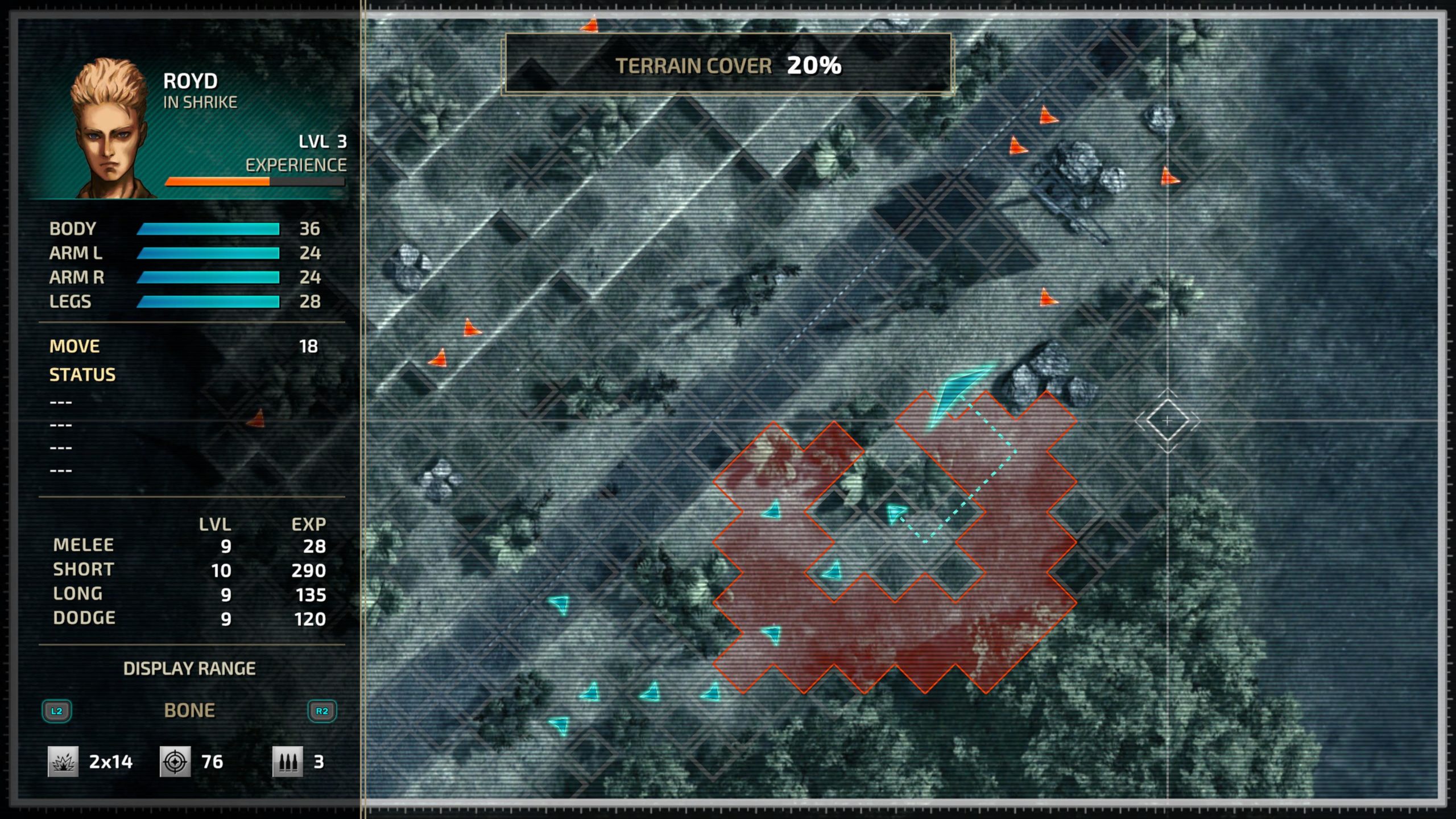
Full Frontal
There must be more than just the graphics though, right? Well, I mentioned difficulty levels. And not one, but seven different ones. Easy, Default and Hard are simple enough to fathom. But then there’s Lieutenant, Captain, Colonel, and General, each upping the ante over the one before. General has enemies’ hit points at 900% and damage at double what it is under default. Truly one for the Wanzer masochists out there.
There’s also a few other quality-of-life speed-ups that have come to feel necessary in remakes of very retro and grind-heavy titles. You can switch off the battle cam and just see the numbers come up. You can make movement instant. Add these together and you can definitely speed up the flow of things, but at the cost of the fun parts of the battle that make it feel like more than a board game.
I experienced a handful of complete back-to-the-home-screen crashes while playing. When this happened in the menu screens it meant a lot of lost progress, tinkering, weapon and part changes that had not yet been caught by the autosave, which perhaps understandably happens when you go in and out of battle. I took to saving almost constantly, on every return to the main location menu, and if I spent more than 10 minutes in the workshop. Hopefully, it will get patched out, and things will be safe.
The original was not a forgiving game, but it was fair. The balance on this remake feels off. RNG and a number of other stats control how likely your weapons are to hit the enemy, and what parts they hit. The RNG currently feels crushingly harsh, almost debilitating at times. Fire off 3x rockets with say 74% accuracy and most of the time only one will hit, sometimes none. Never 3. That feels wrong. Even just literal random should come out trumps more often. I hope some tweaking appears in a future patch, because as it stands it saps the fun out of it.
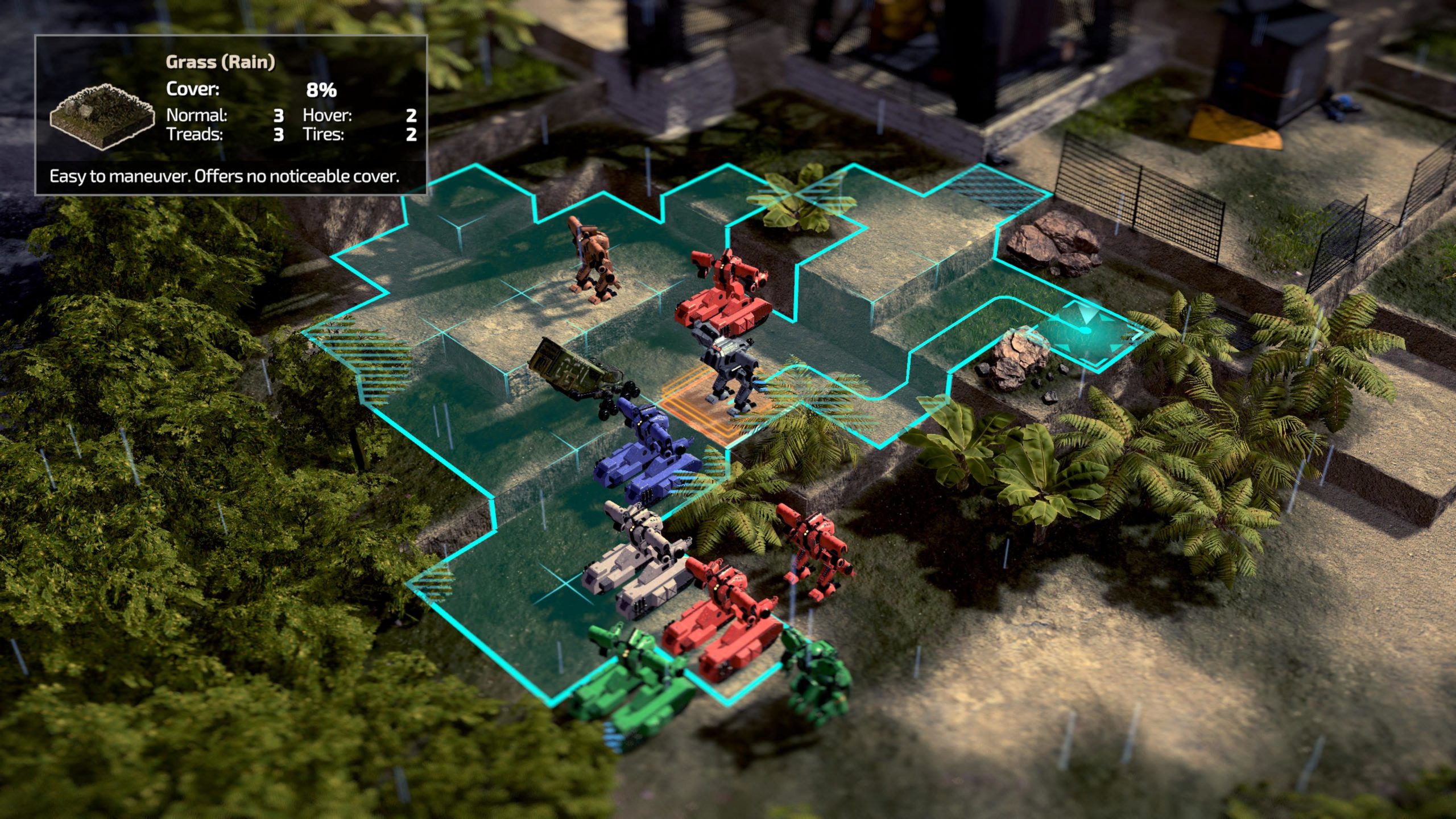
All Quiet On The OCU Front
I’d recommend this Remake for two extremes. If you’ve never played the original, and this is your first foray into the retro Front Missions – then go for it. This is a serviceable front line for modern audiences to experience Front Mission. Similarly, if you are a rabid Front Mission fan and can’t get enough of these types of battles, and would relish replaying a game you’ve beaten three times already in new 3D – then you go for it too. For the rest of us, this remake adds little more than a graphical polish, making it feel more like an extreme remaster.
I lament what could have been in a Front Mission 1st remake. I was expecting modernised battles. I mean area attacks, I mean front, back and side attacks made tactically usable, I mean being able to target mech body parts with a V.A.T.S.-like system. I mean the plethora of things that have become part of the genre in the last twenty years. I was expecting a fully 360-degree camera. I was expecting destructible environments. Off the battlefield I was expecting a beefed-up story with character models, more fleshed-out scenes and dialogue, internal areas and wanzer hangars to explore.
I was expecting an arena with leaderboards, online play maybe, at least a handful of game modes that let me level up and battle outside of the story, and I expected it all in glorious graphics that shouted 2023. I expected a game that was fun to play. Instead what I got was a diluted translation of the script, graphics that lose all the original’s charm and replace it with generic bland 3D, and a one-for-one remake of the battle system that changes virtually nothing. Now maybe the brief was to create just that, but it’s an incredibly disappointing brief, and therefore this ends up a disappointing remake.
I can see Front Mission Second is already being done in this same style, so my hopes for Front Mission 3 being drastically improved from here are looking thin. Fingers crossed it will be something completely different.
Calling Front Mission 1st Remake a remake is stretching the term, when this is more of a like-for-like remaster of the original game, with new graphics and sparse quality-of-life updates. A diluted script, and no embellishment or modernising of the original whatsoever left me feeling disappointed when I had such high hopes for what a modern remake of a Front Mission game could have been.

Front Mission 1st Remake is available now for PlayStation 4 and 5, Xbox Series S|X, Xbox One and PC, and released last year for Nintendo Switch.
Developer: Forever Entertainment
Publisher: Square Enix
Disclaimer: In order to complete this review, we were provided with a promotional copy of the game. For our full review policy, please go here.
If you enjoyed this article or any more of our content, please consider our Patreon.
Make sure to follow Finger Guns on our social channels. Twitter, Facebook, Twitch, Spotify or Apple Podcasts – to keep up to date on our news, reviews and features.
